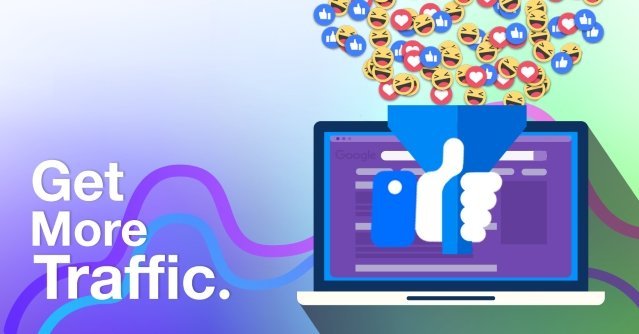Great day, isn’t it?! Anyway…Do you feel like you’re struggling to drive traffic to your website despite your best efforts? You’re not alone. In today’s competitive digital landscape, it’s becoming increasingly challenging to stand out and attract the right audience. But what if there was a way to unlock the secrets of your target market and skyrocket your traffic?
Enter advanced market research—your secret weapon for driving traffic and boosting your online presence. By delving deep into your audience’s behavior, preferences, and pain points, you can uncover hidden opportunities and create strategies that truly resonate. In this blog post, we’ll explore eight powerful techniques to supercharge your traffic through advanced market research. From identifying high-potential traffic sources to optimizing conversion funnels, you’ll discover actionable insights to take your digital marketing game to the next level.

Understanding Advanced Market Research Techniques
Leveraging Big Data for Market Insights
You can unlock valuable market insights by harnessing the power of big data. By analyzing large volumes of customer information, you’ll identify patterns and trends that can inform your traffic-driving strategies. Use data mining techniques to extract meaningful information from diverse sources, including social media, customer feedback, and purchase history.
Conducting Sentiment Analysis on Social Media
Social media platforms are goldmines for understanding your audience’s opinions and preferences. By employing sentiment analysis tools, you can gauge how people feel about your brand, products, or industry. This information helps you tailor your content and marketing approaches to resonate with your target audience, ultimately driving more traffic to your site.
Implementing Predictive Analytics
Predictive analytics allows you to anticipate future trends and customer behaviors. By analyzing historical data and current market conditions, you can forecast which strategies are likely to drive the most traffic. This foresight enables you to allocate your resources more effectively and stay ahead of the competition.
Utilizing AI and Machine Learning in Research
Artificial Intelligence and Machine Learning technologies can revolutionize your market research efforts. These advanced tools can process vast amounts of data quickly, identifying complex patterns and insights that humans might miss. By incorporating AI-driven research techniques, you’ll gain deeper understanding of your market and audience, allowing you to create more targeted and effective traffic-driving strategies.
Now that you’ve grasped these advanced market research techniques, let’s explore how to identify high-potential traffic sources for your business.

Identifying High-Potential Traffic Sources
Now that you understand advanced market research techniques, let’s explore how to identify high-potential traffic sources for your website or business.
Uncovering Emerging Platforms and Channels
You should always be on the lookout for new platforms and channels that could drive traffic to your site. Keep an eye on emerging social media platforms, messaging apps, and content sharing sites. By adopting these platforms early, you can establish a strong presence before they become oversaturated.
Assessing Competitor Traffic Strategies
Analyzing your competitors’ traffic sources can provide valuable insights. Use tools like SimilarWeb or Ahrefs to examine where your competitors are getting their traffic from. You can then adapt and improve upon their strategies to boost your own traffic.
Exploring Niche Online Communities
Don’t overlook the power of niche communities. Forums, subreddits, and specialized social media groups can be goldmines for targeted traffic. Engage authentically in these communities and share valuable content to attract interested visitors to your site.
Analyzing Search Engine Trends
Stay ahead of the curve by monitoring search engine trends. Tools like Google Trends can help you identify rising topics and keywords in your industry. By creating content around these trending topics, you can capture search traffic before your competitors do.
By implementing these strategies to drive traffic, you’ll be well-positioned to identify and leverage high-potential traffic sources. Next, we’ll delve into developing targeted content strategies that will help you make the most of these traffic opportunities.

Developing Targeted Content Strategies
Now that you’ve identified potential traffic sources, it’s time to craft content strategies that will effectively engage your target audience. By developing targeted content, you’ll be able to drive more relevant traffic to your website and improve your overall marketing efforts.
Leveraging User-Generated Content
User-generated content (UGC) is a powerful tool in your content strategy arsenal. By encouraging your customers to create and share content related to your brand, you’re not only building trust but also generating authentic material that resonates with your audience. You can incorporate UGC by featuring customer reviews, testimonials, or social media posts on your website or in your marketing campaigns.
Optimizing for Voice Search and Featured Snippets
As voice search becomes increasingly popular, you need to adapt your content strategy accordingly. Focus on creating content that answers specific questions your audience might ask their voice assistants. Additionally, aim to capture featured snippets by structuring your content with clear headings, bullet points, and concise answers to common queries.
Mapping Content to Customer Journey Stages
To drive traffic effectively, you should create content that addresses the needs of your audience at each stage of their customer journey. Develop informative blog posts for the awareness stage, comparison guides for the consideration stage, and detailed product descriptions or case studies for the decision stage. This approach ensures you’re providing value throughout the entire customer journey.
Creating Buyer Personas Based on Research
Your market research should inform the creation of detailed buyer personas. These fictional representations of your ideal customers will guide your content creation process, helping you tailor your messaging and tone to resonate with specific segments of your audience. Use demographic data, behavioral insights, and pain points uncovered in your research to craft these personas.
By implementing these targeted content strategies, you’ll be well-equipped to drive relevant traffic to your website. Next, we’ll explore how to implement advanced SEO techniques to further boost your visibility and attract more potential customers.

Implementing Advanced SEO Techniques
Now that you’ve developed targeted content strategies, it’s time to focus on implementing advanced SEO techniques to drive more traffic to your site. These strategies will help you improve your search engine rankings and attract more qualified visitors.
Enhancing Mobile User Experience
In today’s mobile-first world, optimizing your site for mobile devices is crucial. You should ensure your website is responsive and loads quickly on smartphones and tablets. Consider implementing Accelerated Mobile Pages (AMP) to improve loading speeds and user experience. Remember, a better mobile experience can lead to higher search rankings and increased traffic.
Improving Site Structure and Internal Linking
A well-structured website with strategic internal linking can significantly boost your SEO efforts. You should organize your content into logical categories and use breadcrumbs to help users navigate your site easily. Implement a solid internal linking strategy to distribute link equity throughout your site and help search engines understand your content hierarchy.
Optimizing for Local SEO
If you have a physical location or serve specific geographical areas, local SEO is essential. You should claim and optimize your Google My Business listing, ensure your NAP (Name, Address, and phone number) information is consistent across the web, and encourage customer reviews. Local SEO can help you attract more targeted traffic from nearby customers searching for your products or services.
Conducting In-Depth Keyword Research
To drive more traffic, you need to target the right keywords. Go beyond basic keyword research and dive deep into long-tail keywords, user intent, and search trends. Use tools like Google’s Keyword Planner, SEMrush, or Ahrefs to identify high-potential keywords with manageable competition. Incorporate these keywords naturally into your content, meta tags, and URLs to improve your search visibility.
By implementing these advanced SEO techniques, you’ll be well on your way to driving more targeted traffic to your site. Next, we’ll explore how leveraging paid advertising insights can complement your organic traffic strategies.

Leveraging Paid Advertising Insights
Now that you’ve implemented advanced SEO techniques, it’s time to explore how paid advertising can provide valuable insights to drive more traffic to your site. By leveraging data from your paid campaigns, you can refine your overall marketing strategy and boost organic traffic as well.
Analyzing PPC Campaign Data for Organic Strategies
You can gain a wealth of knowledge from your pay-per-click (PPC) campaigns. By examining which keywords and ad copy perform best in your paid efforts, you’ll uncover opportunities to optimize your organic content. Look for high-performing keywords in your PPC campaigns and incorporate them into your SEO strategy. This data-driven approach will help you align your content with what your audience is actively searching for.
Testing Ad Creatives with A/B Split Testing
A/B split testing isn’t just for paid ads; it’s a powerful tool for refining your organic content strategy too. Use your paid advertising platform to test different headlines, calls-to-action, and value propositions. Apply the insights you gain to your website copy, blog posts, and social media content. This method allows you to optimize your messaging based on real user data, increasing the likelihood of driving more traffic to your site.
Optimizing Ad Spend with Competitive Intelligence
Competitive intelligence from your paid campaigns can inform your overall traffic-driving strategies. Analyze which competitors are bidding on similar keywords and how their ad copy differs from yours. This information can help you identify gaps in your content strategy and uncover new opportunities to attract traffic. Use tools to monitor your competitors’ ad spend and adjust your own strategies accordingly.
Retargeting Based on Market Research Findings
Your paid advertising efforts provide valuable data about user behavior and preferences. Use this information to create highly targeted retargeting campaigns. By understanding which content resonates with specific audience segments, you can craft personalized retargeting ads that drive users back to your site. This approach not only increases traffic but also improves the quality of that traffic, as you’re reaching out to users who have already shown interest in your offerings.
By leveraging these paid advertising insights, you’ll be well-equipped to refine your traffic-driving strategies across both paid and organic channels. Next, we’ll explore how to harness the power of influencer marketing to further expand your reach and drive even more traffic to your site.

Harnessing the Power of Influencer Marketing
Now that you’ve optimized your paid advertising strategies, it’s time to explore another powerful method to drive traffic: influencer marketing. This approach can significantly boost your reach and credibility within your target market.
Leveraging Micro-Influencers for Niche Markets
You’ll find that micro-influencers often have a more engaged and loyal following in specific niches. By partnering with these influencers, you can tap into highly targeted audiences that are more likely to convert. Look for influencers whose values align with your brand and who have a genuine connection with their followers.
Developing Long-Term Influencer Partnerships
Rather than one-off campaigns, you should focus on building lasting relationships with influencers. This approach allows you to create more authentic content and maintain a consistent presence in your target market. Develop a collaborative strategy that benefits both your brand and the influencer, ensuring a mutually beneficial partnership.
Measuring Influencer Campaign ROI
To ensure your influencer marketing efforts are driving traffic effectively, you need to track and measure your ROI. Set clear goals and KPIs before launching campaigns, and use tracking links and unique promo codes to attribute traffic and conversions accurately. This data will help you refine your strategies and allocate your resources more efficiently.
Identifying Relevant Influencers Through Data Analysis
Leverage advanced market research techniques to identify the most suitable influencers for your brand. Analyze engagement rates, audience demographics, and content relevance to find influencers who can truly impact your traffic. Tools like social listening platforms and influencer marketing databases can provide valuable insights to inform your decision-making process.
By harnessing the power of influencer marketing, you’ll be able to tap into new audiences and drive targeted traffic to your website. Next, we’ll explore how to optimize your conversion funnels to make the most of this increased traffic.

Optimizing Conversion Funnels
Now that you’ve learned about various strategies to drive traffic, it’s time to focus on optimizing your conversion funnels to maximize the value of that traffic. By fine-tuning your funnel, you’ll ensure that more visitors convert into customers, boosting your overall return on investment.
Streamlining Checkout Processes
Your checkout process can make or break a sale. To optimize it, you should focus on simplifying the steps required to complete a purchase. Remove unnecessary fields, offer guest checkout options, and provide clear progress indicators. By reducing friction in the checkout process, you’ll see fewer abandoned carts and more completed transactions.
Personalizing User Experiences Based on Data
Leverage the data you’ve gathered through your market research to create personalized experiences for your visitors. By tailoring content, product recommendations, and offers to individual user preferences, you’ll increase engagement and conversion rates. Use tools like dynamic content and personalized email campaigns to deliver targeted messages that resonate with your audience.
Implementing Heat Mapping and Click Tracking
To gain deeper insights into user behavior, implement heat mapping and click tracking tools on your website. These visual representations of user interactions will help you identify which elements of your pages are most engaging and which might be causing friction. Use this information to optimize your page layouts and call-to-action placements for maximum effectiveness.
Conducting User Behavior Analysis
Dive deeper into your analytics to understand how users navigate through your funnel. Look for common drop-off points and analyze why users might be leaving at these stages. Conduct A/B tests to experiment with different layouts, copy, and offers to see what resonates best with your audience. By continuously analyzing and refining your funnel based on user behavior, you’ll create a more effective conversion path.
With these optimization techniques in place, you’ll be well-equipped to turn your increased traffic into tangible results. Next, we’ll explore how to measure and analyze your traffic performance to ensure your strategies are delivering the desired outcomes.
Measuring and Analyzing Traffic Performance
Now that you’ve implemented various strategies to drive traffic, it’s crucial to measure and analyze your performance. This will help you understand what’s working and where you need to make adjustments.
Conducting Regular Traffic Audits and Adjustments
You should conduct traffic audits regularly to gain insights into your website’s performance. Start by analyzing your traffic sources, user behavior, and conversion rates. Look for patterns and trends that can inform your strategy. Based on these findings, make necessary adjustments to your approach. Remember, what works today may not work tomorrow, so stay agile and ready to adapt.
Creating Custom Dashboards for Real-Time Monitoring
To keep a pulse on your traffic performance, create custom dashboards that display key metrics in real-time. You can use tools like Google Data Studio or Tableau to visualize your data. Include metrics such as website visits, bounce rate, time on site, and conversion rates. With these dashboards, you’ll be able to spot trends and issues quickly, allowing you to make informed decisions on the fly.
Implementing Cross-Channel attribute Models
Understanding how different channels contribute to your overall traffic and conversions is crucial. Implement cross-channel attribution models to get a clearer picture of your customer’s journey. This will help you identify which channels are most effective at driving quality traffic and conversions. You can then allocate your resources more efficiently, focusing on the strategies that yield the best results.
Setting Up Advanced Google Analytics Tracking
To get the most out of your traffic analysis, set up advanced Google Analytics tracking. This includes implementing custom dimensions and metrics, setting up goal tracking, and using event tracking. These advanced features will provide you with deeper insights into user behavior and help you measure the success of your traffic-driving strategies more accurately.
By mastering these measurement and analysis techniques, you’ll be well-equipped to refine your strategies and continue driving high-quality traffic to your website.

Conclusion
By implementing these advanced market research strategies, you’ll be well-equipped to drive significant traffic to your website or platform. From identifying high-potential traffic sources to leveraging influencer marketing and optimizing conversion funnels, each technique plays a crucial role in boosting your online presence.
Remember, the key to successful traffic generation lies in continuous analysis and adaptation. Regularly measure and analyze your traffic performance, and be prepared to adjust your strategies based on the insights you gather. By staying proactive and data-driven, you’ll be able to stay ahead of the competition and consistently attract and engage your target audience.
FAQs
Q: What is the role of AI and machine learning in advanced market research?
A: AI and machine learning revolutionize market research by processing vast amounts of data quickly, revealing patterns and insights that can inform more effective marketing strategies.
Q: How can sentiment analysis on social media impact traffic generation?
A: Sentiment analysis helps understand public perception of your brand, allowing you to adjust your strategies in real-time to improve engagement and drive traffic effectively.
Q: Why is predictive analytics important for traffic generation?
A: Predictive analytics forecasts future trends and behaviors, enabling marketers to craft strategies that tap into upcoming demands and opportunities, potentially increasing traffic with well-timed content and campaigns.

